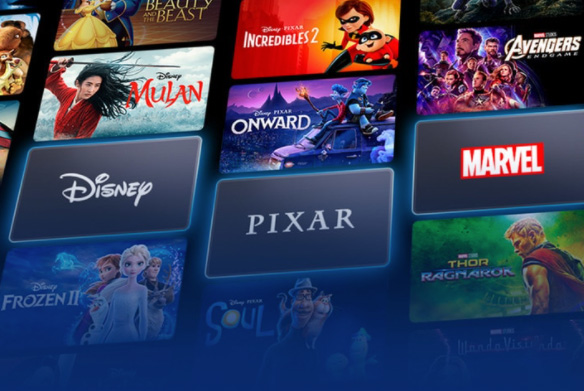Disney sets date for ad tier launch

Disney+’s ad tier will launch on 8 December, the company reported ahead of its better-than-expected Q3 earnings.
In the company’s earnings call, CEO Bob Chapek stated that “we are taking a thoughtful approach by launching with a lower ad load and frequency to ensure a great experience for viewers. This approach, coupled with strong advertiser demand, translated into Disney+ earning industry-leading CPM rates at the most recent upfront”.
He went on to discuss how “taking a conservative approach” with its lower ad load gives Disney the “ability to expand if we need to and not have to go the other way, which I think would be a much bigger deal”.
‘Plenty of room on price value’
Alongside the announcement, Disney also revealed it would be significantly hiking the price of its streaming service offerings.
Beginning with the launch of Disney’s ad tier on, Disney+ will now cost users an additional $3 per month, increasing the price to $10.99. Its ad tier will cost the same as the old ad-free price—$7.99 per month.
Hulu’s ad-free model will rise from $12.99 per month to $14.99 per month and its ad tier will increase from $6.99 per month to $7.99 per month on October 10.
ESPN+ will also see a 43% price hike to $9.99 per month.
Bundle pricing includes several variations depending on the inclusion of ESPN+ and whether users want to pay for ad-free bundles. The price of ad-free Disney+ and Hulu, with ESPN+, will remain at $19.99, but the price of ad-included Disney+, Hulu, and ESPN+ will be set at $12.99, a dollar lower than the current Disney bundle price.
Chapek defended the substantial price increases: “We launched at an extraordinarily compelling price across all the platforms that we have for streaming. I think it was easy to say that we’re probably the best value in streaming. And since that initial launch, we’ve continued to invest handsomely in our content, as you know.
“We believe, because the increase in the investment over the past two-and-a-half years relative to a very good price point, that we have plenty of room on price value. And we do not believe that there’s going to be any meaningful long-term impact on our churn as a result.”
Operating losses are piling up
The price hikes come as the company is bleeding cash by spending heavily on streaming—Disney’s free cash flow declined 65% year-over-year from $528m to $187m.
Disney’s operating losses on its direct-to-consumer segment increased significantly year-over-year, from -$293m to -$1.1bn. For reference, its linear networks increased operating income by 13%.
The company attributed the lower results to higher programming and production, technology, and marketing costs at Disney+ and Hulu, as well as higher sports programming costs for ESPN+. The losses were partially offset by increases in subscription and (to a lesser degree) advertising revenue, however.
Disney blew past Disney+ subscription expectations, reaching 152.1 million subs against 147.76 million expected.
Hulu reached 46.2 million subscribers and ESPN+ had 22.8 million. In sum, the three core streaming services now have more subscribers than the once-untouchable Netflix (221 million versus Netflix’s 220 million).
Previous reports had shown that demand for Disney+, along with Netflix, has remained relatively inelastic during the cost of living crisis, especially compared to other streaming services.
A big earnings beat
Though its operating losses may be cause for concern over the sustainability of Disney’s streaming expenditure, it was an upbeat quarter for the entertainment behemoth overall.
Disney beat earnings expectations in its Q3 report, with earnings per share coming in at $1.09 (versus $0.96 expected) and revenue of $21.5bn (versus $20.96bn expected).
Disney’s parks also saw a highly successful quarter as families sought to return over the summer following years of pandemic restrictions. The parks, experiences, and products division of the company saw a 70% year-over-year increase in revenue from $4.3bn to $7.4bn.
Chapek remarked: “Even as our cruise ships and international visitation have yet to fully recover, domestic demand at our theme parks continues to be strong, and we are seeing continued progress in those businesses still recovering from the pandemic”.
Disney’s stock rose over 7% in pre-market trading on the earnings report.




